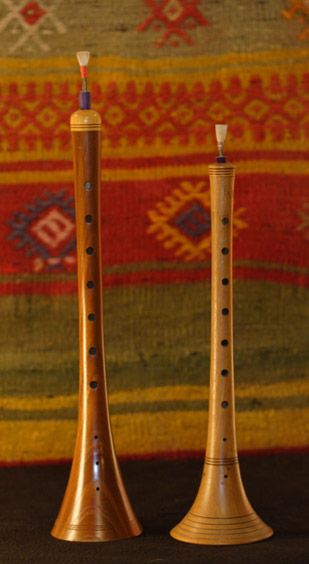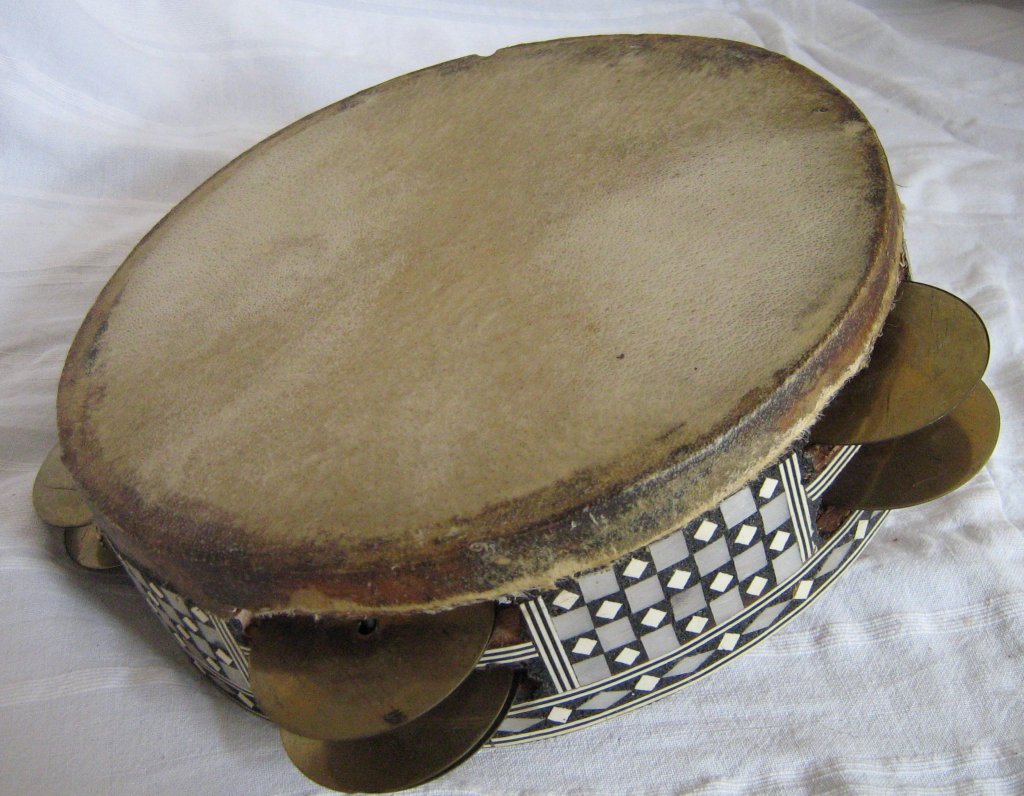Arabic Musical Instruments on:
[Wikipedia]
[Google]
[Amazon]
Arabic musical instruments can be broadly classified into three categories: 


 * Riq
*
* Riq
*
string instruments
In musical instrument classification, string instruments, or chordophones, are musical instruments that produce sound from vibrating strings when a performer strums, plucks, strikes or sounds the strings in varying manners.
Musicians play some ...
(chordophones
In musical instrument classification, string instruments, or chordophones, are musical instruments that produce sound from vibrating strings when a performer strums, plucks, strikes or sounds the strings in varying manners.
Musicians play som ...
), wind instruments
A wind instrument is a musical instrument that contains some type of resonator (usually a tube) in which a column of air is set into vibration by the player blowing into (or over) a mouthpiece set at or near the end of the resonator. The pitch ...
(aerophones
An aerophone is a musical instrument that produces sound primarily by causing a body of air to vibrate, without the use of strings or membranes (which are respectively chordophones and membranophones), and without the vibration of the instrum ...
), and percussion instruments
A percussion instrument is a musical instrument that is sounded by being struck or scraped by a beater including attached or enclosed beaters or rattles struck, scraped or rubbed by hand or struck against another similar instrument. Ex ...
. They evolved from ancient civilizations in the region.


Chordophones
Plucked lutes
*Oud
The oud ( ; , ) is a Middle Eastern short-neck lute-type, pear-shaped, fretless stringed instrument (a chordophone in the Hornbostel–Sachs classification of instruments), usually with 11 strings grouped in six courses, but some models have ...
*Qanbūs
A ''qanbūs'' () is a short-necked lute that originated in Yemen and spread throughout the Arabian Peninsula. Sachs considered that it derived its name from the Turkic komuz, but it is more comparable to the oud. The instrument was related to or ...
*Buzuq
The ''buzuq'' (, ; also transliterated ''bozuq'', ''bouzouk'', buzuk etc.) is a long-necked fretted lute, similar to the ''bozuk düzen bağlama'' likely originated in the Eastern Mediterranean, particularly in the Levant, where it is prominen ...
* Awtar
* Lutar
*Sintir
The sintir (), also known as the guembri (), gimbri, hejhouj in Hausa language, is a three stringed skin-covered bass plucked lute used by the Gnawa people of Morocco. It is approximately the size of a guitar, with a body carved from a log and c ...
Zithers
* Qanun *Iraqi Santur
The santur ( ; ) is a hammered dulcimer of Iranian origin.--- Rashid, Subhi Anwar (1989). ''Al-ʼĀlāt al-musīqīyya al-muṣāhiba lil-Maqām al-ʻIrāqī''. Baghdad: Matbaʻat al-ʻUmmāl al-Markazīyya.
History
The santur was invented ...
Bowed lutes
* Jawzah * Ghuanbri *Kamancheh
The kamancheh (also kamānche or kamāncha) (, , , ) is an Iranian bowed string instrument used in Persian, Azerbaijani, Armenian, Kurdish, Georgian, Turkmen, and Uzbek music with slight variations in the structure of the instrument.
Th ...
*Rababa
''Rebab'' (, ''rabāba'', variously spelled ''rebap'', ''rubob'', ''rebeb'', ''rababa'', ''rabeba'', ''robab'', ''rubab'', ''rebob'', etc) is the name of several related string instruments that independently spread via Islamic trading rout ...
*Pontic lyra
Pontic, from the Greek ''pontos'' (, ), or "sea", may refer to:
The Black Sea Places
* The Pontic colonies, on its northern shores
* Pontus (region), a region on its southern shores
* The Pontic–Caspian steppe, steppelands stretching from nor ...
Lyres
*Simsimiyya
The ''simsimiyya'' (Arabic: سمسمية, and سنسمية ''simsimyya/sinsimiyya''; pl. ''simsimiyyāt/sinsimiyyāt'') is a box or bowl lyre used in Egypt. Models exist with both circular soundboxes as well as rectangular.
In the past, Egyptia ...
*Kissar
The ''kissar'' (also spelled ''kissir''), tanbour or gytarah barbaryeh is the traditional Nubian lyre, still in use in Egypt, Sudan and Ethiopia.
It consists of a body having instead of the traditional tortoise-shell back, a shallow, round bow ...
* Tanbūra
*Jewish Lyre
Jews (, , ), or the Jewish people, are an ethnoreligious group and nation, originating from the Israelites of ancient Israel and Judah. They also traditionally adhere to Judaism. Jewish ethnicity, religion, and community are highly inte ...
Aerophones
Flutes
*Ney
The ney ( ; ) is an end-blown flute that figures prominently in traditional Persian, Turkish, Jewish, Arab, and Egyptian music. In some of these musical traditions, it is the only wind instrument used. The ney has been played for over 4,500 ye ...
* Kawalah
*Salamiyah
file:Hama qalat shmemis salamiyyah syria 1995.jpg, A full view of Shmemis (spring 1995)
Salamiyah (; also transliterated ''Salamiyya'', ''Salamieh'' or ''Salamya'') is a city in central Syria, administratively part of the Hama Governorate. It is ...
* Minjayrah
* Shababah
* Shakuli
* Furayrah
* Kasab
Reed instruments
* Mizmar * Khalul (Gulfian Mizmar) * Ghayta *Arghul
The ''arghul'' (), also spelled ''argul'', ''arghoul'', ''arghool'', ''argol'', or ''yarghul'', is a Instrument (music), musical instrument in the reed instrument, reed family. It has been used since ancient Egyptian times and is still used as a ...
* Zumarah bi suwan
* Maqrunah
*Mijwiz
The ''mijwiz'' (, DIN: ''miǧwiz'') is a traditional Middle East musical instrument popular in Palestine, Egypt, Syria, Lebanon and Jordan. Its name in Arabic means "dual", because of its consisting of two, short, bamboo pipes with reed tips ...
* Haban (Gulfian Bagpipe)
* Jirbah (East Tunisian Bagpipe)
* Mizwad (West Tunisian Bagpipe)
* Zughra (Moroccan Bagpipe)
* Saksifun (Arabic Saxophone)
Trumpets
*Nafir
''Nafir'' (Arabic نَفير, DIN 31635, DMG ''an-nafīr''), also ''nfīr'', plural ''anfār'', Turkish ''nefir'', is a slender shrill-sounding straight natural trumpet with a cylindrical tube and a conical metal bell, producing one or two note ...
Percussion instruments
Drums and frame drums
 * Riq
*
* Riq
*Daf
Daf (), also known as dâyere and riq, is an Iranian frame drum musical instrument, also used in popular and classical music in Persian-influenced South and Central Asia, such as in Afghanistan, Azerbaijan, Tajikistan, Iran, Uzbekistan, many ...
*Bendir
The bendir (, ; : , ) is a wooden-framed frame drum of North Africa and West Asia, Southwest Asia.
The bendir is a traditional instrument that is played throughout North Africa, as well as in Sufism, Sufi ceremonies; it was played, too, in Ancie ...
* Dumbaki
* Duhulah
* Drinjah
* Bass Drinjah
* Khishbah
* Kasurah
*Tabl Tsjikangha Tabl may refer to:
* Tabl, Iran, a village in Hormozgan Province, Iran
* A Persian name for the Indian drums known as tabla
* A large drum from Turkey, Bulgaria, Macedonia, and the Middle East also known as davul
The davul, dhol, tapan, atabal ...
* Tabl Masanduw
* Tabl Bib
* Taarija
*Tar
Tar is a dark brown or black viscous liquid of hydrocarbons and free carbon, obtained from a wide variety of organic materials through destructive distillation. Tar can be produced from coal, wood, petroleum, or peat. "a dark brown or black b ...
*Tar Barashim
Tar is a dark brown or black viscous liquid of hydrocarbons and free carbon, obtained from a wide variety of organic materials through destructive distillation. Tar can be produced from coal, wood, petroleum, or peat. "a dark brown or black bitu ...
(Shake Tar)
* Tar Mirjaf (Low Tar)
*Tar Saghul
Tar is a dark brown or black viscous liquid of hydrocarbons and free carbon, obtained from a wide variety of organic materials through destructive distillation. Tar can be produced from coal, wood, petroleum, or peat. "a dark brown or black bitu ...
(High Tar)
* Katim
*Mirwas
The ''mirwās'' or ''marwas'' (), plural ''marāwīs'' () is a small double-sided, high-pitched hand drum originally from the Middle East. It is a popular instrument in the Arab States of the Persian Gulf, used in '' sawt'' and '' fijiri'' music ...
* Zir (Naqarah)
* Qas'ah
*Tbilat
The tbilat is a percussion instrument from Morocco which resembles bongos and tabla. It consists of a pair of decorated pottery drums of different sizes. The skinheads are stretched by plaited gut cords. This membranophone is placed on the ground ...
*Tabl Bahri Tabl may refer to:
* Tabl, Iran, a village in Hormozgan Province, Iran
* A Persian name for the Indian drums known as tabla
* A large drum from Turkey, Bulgaria, Macedonia, and the Middle East also known as davul
The davul, dhol, tapan, atabal ...
(Khamari & Laauwb)
* Tabl Hajir (Khamari & Laauwb)
* Tabl Nasayfi (Khamari & Laauwb)
* Al Ras
*Mazhar
The mazhar (; : ''mazāhar'', مزاهر) is a large, heavy tambourine used in Arabic music. The mazhar's frame is generally made out of wood. Its single head is considerably thicker than that of the riq, its smaller cousin. Some drums have bras ...
Other percussion
* Shakhshikhah (Sistrum) * Sajat * Turah (Egyptian Sajat) * Twaysat (Gulf Sajat) *Krakebs
Qraqeb or garagab (), in English often transliterated as krakeb, are a large iron castanet-like musical instrument primarily used as the rhythmic aspect of Gnawa music. Gnawa today is part of the North African culture and is inherent in the Ma ...
*Hawan
In Hinduism, ''Yajna'' or ''Yagna'' (, ɐd͡ʒɲə ) also known as Hawan, is a ritual done in front of a sacred fire, often with mantras. Yajna has been a Vedic tradition, described in a layer of Vedic literature called Brahmanas, as well a ...
* Yahalah/Jahalah (Clay jug)
* Manjur
*Mihbaj
A ''mihbaj'' () is a traditional Bedouin implement, made of a wooden base with a foot-long pestle, that serves both as a coffee grinder and as a percussion instrument. It is one of the few instruments used in Bedouin music
Bedouin music () is ...
* Maalaqa
* Safqa (Arabic hand clap)
{{Arabic musical instruments
Arabic musical instruments
Lists of musical instruments